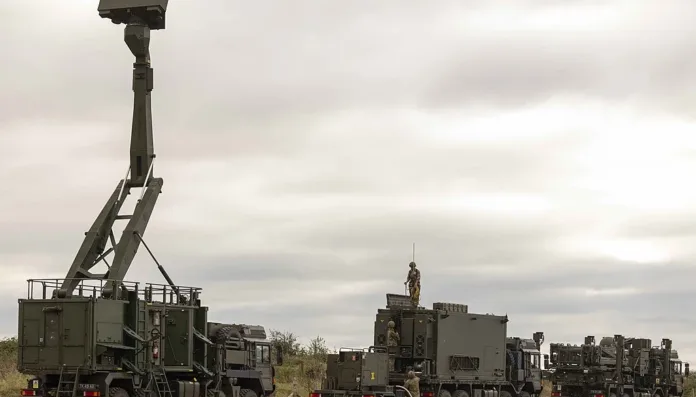UK doubles Land Ceptor stockpile, but experts warn critical defences against major threats are missing
Britain is spending £118 million on new air defence missile systems, but serious doubts remain about whether the purchase will protect the country from modern threats. The Ministry of Defence (MoD) confirmed that the British Army will acquire additional Land Ceptor missiles to strengthen the Sky Sabre system, which replaced the ageing Rapier network in 2021.
For over 50 years, Rapier batteries provided frontline air defence for deployed forces. Yet by the time the system was retired, it was considered outdated against advanced aerial threats. Sky Sabre, its successor, is mobile, ground-based and designed to counter aircraft, helicopters, drones and guided munitions. Crucially, it can integrate with the Royal Navy, Royal Air Force and NATO systems, making it far more adaptable than its predecessor.
At the heart of Sky Sabre lies the Land Ceptor missile. Weighing 100kg and armed with a 10kg warhead, it can intercept targets up to 15 miles away – roughly three times the reach of Rapier. The missile offers fast, precise protection and forms the backbone of Britain’s tactical air defence.
However, the threat environment today is far more complex than when the MoD first commissioned Sky Sabre. Following the end of the Cold War, British defence planners assumed the country would mainly fight expeditionary wars against less sophisticated adversaries. But the Russian invasion of Ukraine and waves of Iranian missile attacks on Israel have proved that far greater stockpiles are needed to confront highly capable enemies.
Embed from Getty ImagesSean Bell, a military analyst, said that while the Land Ceptor provides “excellent point-defence capability,” it cannot counter the most dangerous modern threats. “It is not an effective counter to ballistic or hypersonic missiles,” he explained. That role falls to the Royal Navy’s Type 45 destroyers, equipped with Sea Viper systems and the Aster 30 missile, which can engage high-speed ballistic targets.
The UK once maintained robust national missile defences. During the Cold War, Bloodhound surface-to-air missiles were stationed around the country, providing a shield against Soviet bombers and long-range weapons. But after the Soviet collapse, the perceived threat faded, and missile defence was downgraded. Today, the only fixed safeguard is the radar at RAF Fylingdales, which contributes to the Ballistic Missile Early Warning System (BMEWS). It can detect threats but cannot intercept them.
Instead, Britain relies on NATO’s layered network of European allies to deter attacks against its territory. This reality leaves a troubling gap. While the new Land Ceptor order doubles the British Army’s tactical capability, it still falls short of addressing strategic vulnerabilities.
The wars in Ukraine and the Middle East highlight the speed of technological change. Ballistic missiles, once the preserve of superpowers, are now being manufactured in increasing numbers and with greater sophistication. Hypersonic weapons, capable of travelling at more than five times the speed of sound, present an even more urgent challenge.
Despite these dangers, the government’s latest investment is a stopgap rather than a solution. Without significant and rapid development of systems capable of intercepting ballistic and hypersonic missiles, Britain’s critical infrastructure – from power stations to military bases – remains exposed.
The MoD insists the purchase will enhance the Army’s readiness, but experts agree that Sky Sabre is a tactical rather than strategic shield. It offers crucial protection for soldiers and assets in combat zones but cannot provide nationwide cover against long-range missile strikes.
As the global threat landscape intensifies, Britain’s £118 million purchase raises as many questions as it answers. The missiles will certainly boost the Army’s capacity to fend off drones and aircraft, but against the spectre of hypersonic and ballistic attacks, the UK remains dangerously vulnerable.
